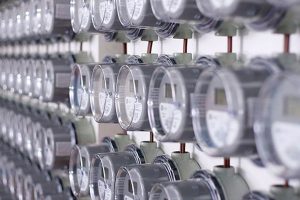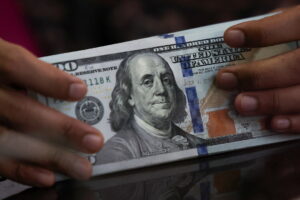By Katherine K. Chan
THE PHILIPPINES’ balance of payments (BoP) surplus sharply narrowed year on year in September, the central bank reported on Monday.
The country’s BoP position was at a $82-million surplus in September, shrinking from the $3.526-billion surfeit in the same month a year ago, preliminary Bangko Sentral ng Pilipinas (BSP) data showed.
This was also narrower than the $359-million surplus seen in August and marked the second straight month that the Philippine external position yielded a surfeit.
“The BoP surplus reflected the Bangko Sentral ng Pilipinas’ net income from its investments abroad and National Government’s (NG) net foreign currency deposits with the BSP,” the central bank said in a statement.
BoP refers to the country’s economic transactions with other nations. A surplus indicates more funds entered the country, while a deficit shows that the country spent more than it received.
Last month’s surplus helped narrow the country’s end-September BoP deficit to $5.315 billion. However, this was a reversal from the $5.117-billion surplus posted in the same period last year.
“Preliminary data indicate that the year-to-date BoP deficit was largely due to the continued trade in goods deficit,” the BSP said.
“This was partly offset by the sustained net inflows from personal remittances from overseas Filipinos, trade in services, foreign direct and portfolio investments, and foreign borrowings by the NG.”
The country’s trade gap, or the difference between its exports and imports, was at $32.38 billion in the first eight months of the year, the latest data from the Philippine Statistics Authority showed. This was narrower than the $34.33-billion deficit in the comparable year-ago period.
The Philippines’ trade-in-goods balance has been in deficit for over a decade or since the $64.95-million surplus recorded in May 2015.
“September’s BoP surplus was likely bolstered by net receipts in services trade, overseas Filipino remittance inflows, and net foreign equity investments that, combined, overshadowed trade-in-goods deficit and net foreign bond outflows. This led the third-quarter BoP to be in a surplus position,” Angelo B. Taningco, research head and chief economist at Security Bank Corp., said in an e-mail.
BSP data showed that the country recorded a $274-million surplus in the July-September period. This was smaller than the $3.676-billion surfeit in the same quarter last year.
Mr. Taningco said they expect another surplus this quarter, which would help trim the end-2025 BoP deficit to $4.5 billion.
The BSP expects the overall BoP position to end at a $6.9-billion deficit this year or -1.4% of gross domestic product.
“The smaller BoP surplus reflects fewer one-off inflows and a still-wide trade gap, but the external position remains manageable with steady remittances, strong services exports, and solid reserves,” Robert Dan J. Roces, economist at SM Investments Corp., said in a Viber message.
“As global rates ease and regional demand recovers, investment inflows may return and support liquidity and credit conditions, which should help firms with deep local roots and diverse sources of growth.”
RESERVESThe BSP said the country’s BoP position mirrored the increase in its gross international reserves (GIR) to $109.1 billion at end-September from $107.1 billion as of August.
“The level of GIR remains an adequate external liquidity buffer, equivalent to 7.3 months’ worth of imports of goods and payments of services and primary income,” it said. This is well above the three-month standard.
“Moreover, it covers about 3.8 times the country’s short-term external debt based on residual maturity.”
This ensures that the country has ample foreign exchange to meet its financing needs, such as import and debt payments, the central bank said.
The country’s gross reserves are made up of foreign-denominated securities, foreign exchange, and other assets such as gold. Aside from financing its external obligations, these are used by the central bank to help stabilize the peso and also serve as a buffer against global economic disruptions.
The BSP expects dollar reserves to settle at $105 billion by end-2025.

















